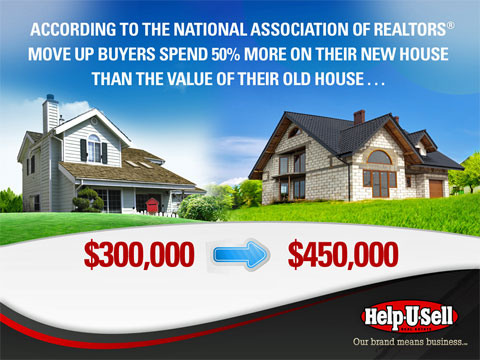I had breakfast with a broker last week. He’s a great broker, has come through Real-Ageddon with a few scars on his face but never lost his smile. His perseverance is paying off: he’s having a very good year.
Now, understand this: I am a Help-U-Sell purist. With no hesitation and absolutely no doubt, I embrace what our visionary founder created. In short: If Don Taylor Said It, I Believe It, And That Settles It. But I am becoming a vanishing breed. Most Help-U-Sell brokers have adjusted the system here and there, mostly in response to the difficult market realities of the last five years. I have no problem with that: job one is survival. But when you talk to me about your sliding scale of fees (versus your SET FEE) or the elimination of Seller Participation from your operational system . . . well, I can get very loud and long winded. As a result, many Help-U-Sell brokers won’t talk to me about what they’re really doing; they just don’t want to get the lecture again.
My breakfast broker is different: he’s made all kinds of adjustments and has no problem sharing them with me. We debate them. On tap at this meeting were Seller Participation and Open Houses.
‘I don’t do Open Houses, ‘ he said.
‘Ok,’ I answered, ‘But your sellers hold their own, don’t they?’
‘No. I tell them it’s a waste of time,’ he paused, registering the shock on my face. ‘If they insist, I’ll give them signs and they can hold their own . . . but I don’t do Open Houses.’
I was running a little short of breath. ‘Can . . you . . please share . . with me . . . why?’
‘They don’t work. Open Houses are dead,’ he said, ‘Plus, that’s old-style marketing. It’s what ‘real estate ladies‘ did in the seventies before the Internet made them irrelevant.’
‘But . . .’
‘Buyers don’t work that way anymore.’ He offered me a sip of water in hopes it would help me regain my composure. ‘Today, they’re on the Internet, looking at photos, going to virtual tours. If they see something they like, they drive by . . . and if it looks good, that’s when they call to get inside.’
‘Really?’ I was picturing a pristine and deserted beach and silently chanting ‘oommm‘ to myself in hopes of getting my pulse to slow.
‘Nobody has time to drive all over town, dropping in on random Open Houses. That’s just not the way to get a property sold today.’
When I got back to my office, I did a little Googling. I discovered that he is not alone in his thinking. Many agree that the Open House is a vestige left over from a time that has long passed. But not everyone believes this. I tossed the question out to our Brokers on our regular Wednesday Power Hour Webinar. Most were absolutely on-board with Open Houses and mostly with Seller Participation. As I listened to them I began to realize where the discord was coming from.
It all has to do with being clear about what you want to accomplish.
If your goal is to sell the house that’s being held open . . . well, that’s a rare occurrence at best. Maybe Open Houses as a strategy for accomplishing that . . . are dead.
But a couple of Help-U-Sell Brokers said the principal benefit of Open Houses (held by them) is the opportunity they provide to present their program to potential Sellers – the neighbors, the casual drop-bys. People are surprised to find a Help-U-Sell Broker sitting on an Open House and say something like, ‘Gosh, I didn’t think you guys did Open Houses.’ And that opens a whole dialogue about who we are and what we do.
Others talked about the benefit of having dozens of additional directional and Open House signs up in the neighborhood. The added visibility boosts inquiries from both buyers and sellers.
And finally, there were those who talked about how Seller-held Open Houses create additional opportunities for lead capture, opportunities that don’t involve the Broker’s time. Going back to Don Taylor: A well-coached Seller, holding his or her own Open House, always gets contact information on anyone coming through. On Monday morning, that list is faxed to the office for followup. Most times, the visitor has eliminated the subject property . . . but is open to hearing about others (bingo!); and sometimes, with a little clarification, they are ready to make an offer on the subject property (bingo again!). A Help-U-Sell broker who has done a good job of selling Seller Participation may walk into the office on Monday morning to find 3 or 4 or more sign-in sheets in the FAX machine, and suddenly there are half a dozen more buyer leads.
So, here is the message:
As with every piece of marketing you do, the first order of business is to define exactly what it is you want to accomplish. Then track results in terms of what you said you were after and evaluate the program based on that criteria. Simple.
What might you want to accomplish with an Open House? Pick one or two, not all five:
- Sell the subject property
- Make contact with buyer prospects who probably won’t make an offer of the subject property but who may buy something else through you
- Create an opportunity to spread your message to potential sellers in the area
- Boost your visibility in the marketplace through increased signage (directional and Open House signs)
- And in the case of Seller held Open Houses, multiply your efforts, getting more done than you can do yourself


